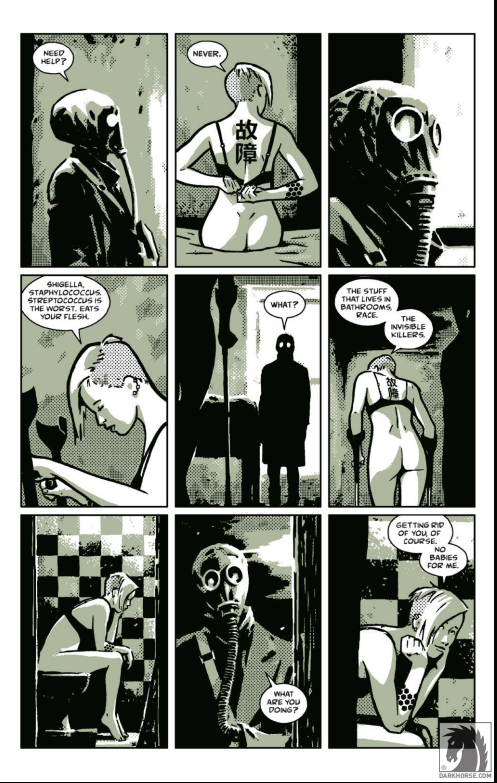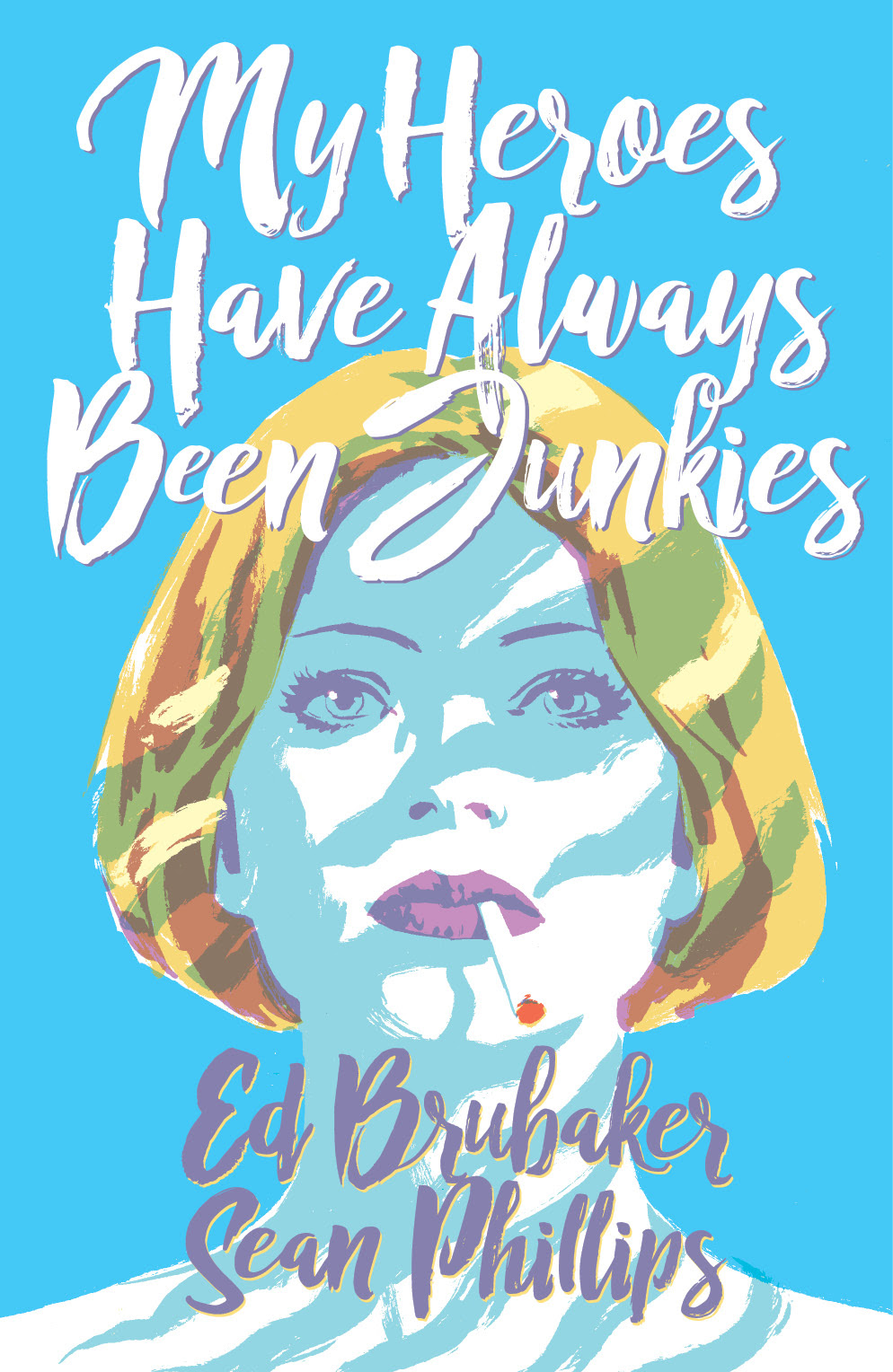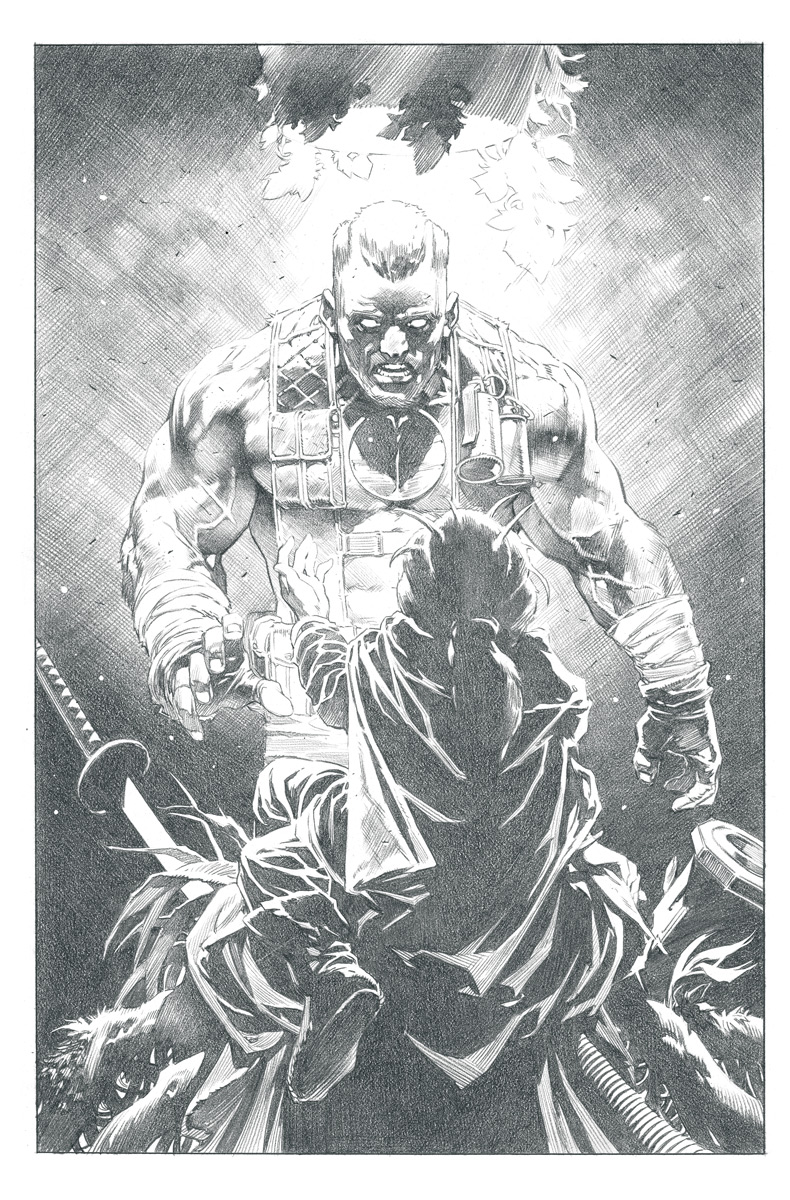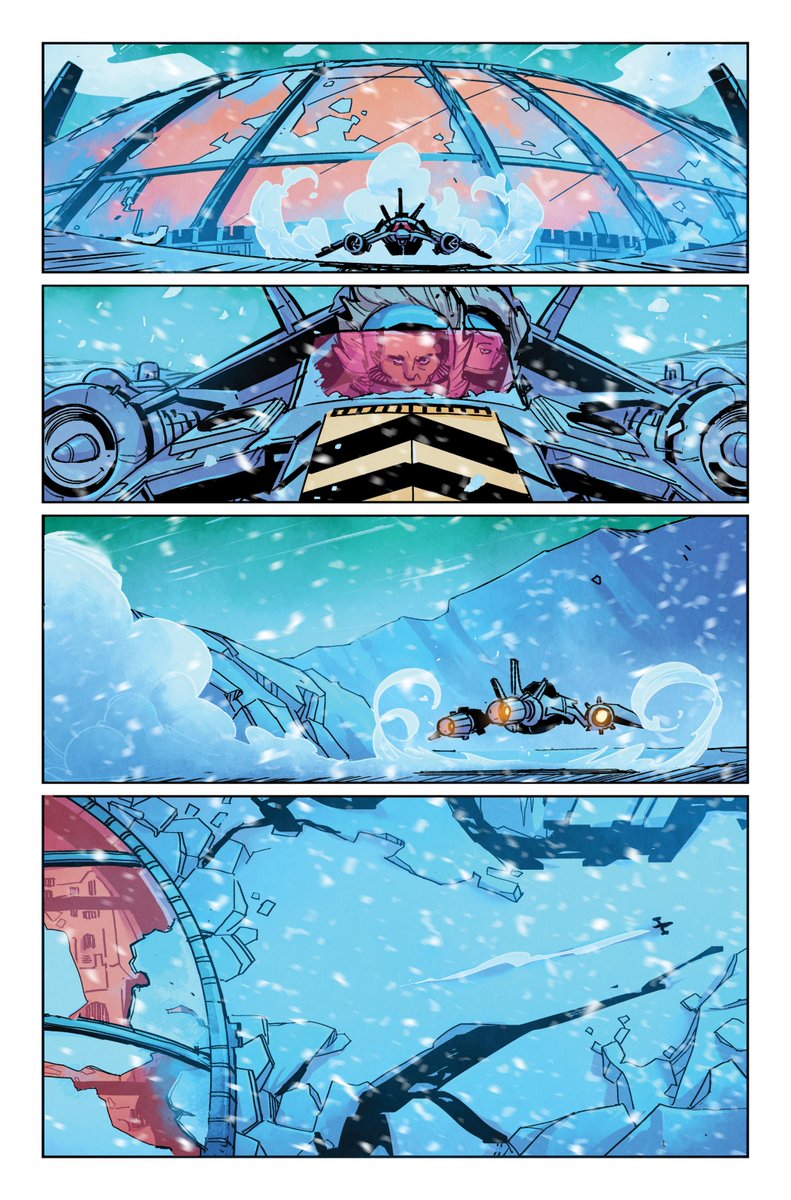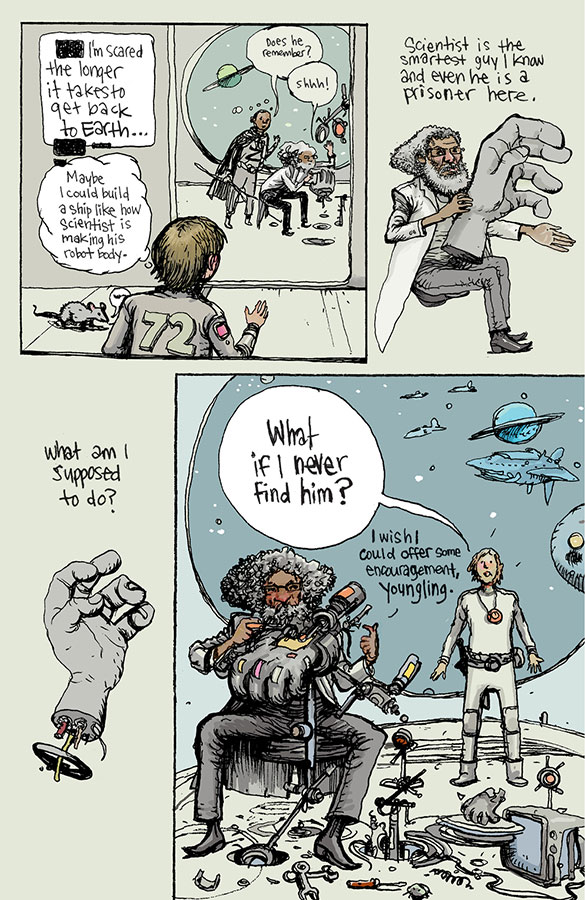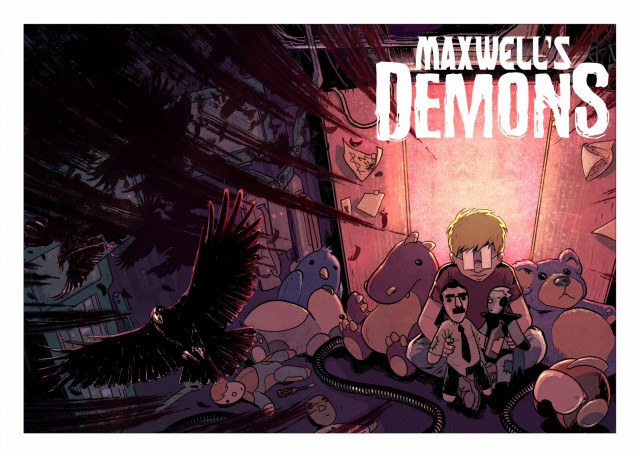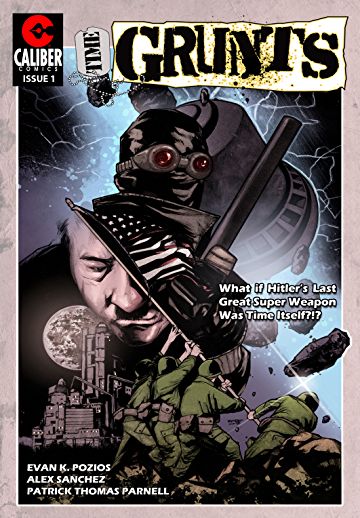Top Previews for the Week of July 9
By Zack Quaintance — With nearly every publisher in comics readying for San Diego Comic Con (which is now less than two weeks away), the release of new interior art previews was slow this past week. Boom! Studios shared a new wrestling book that we were surprised to find ourselves so interested in, and Valiant Entertainment was as conscientious to show off its work as always.
In other words...we still cobbled together five comics previews for this section! Oh, plus we dug back a few months to look at one of August's most exciting comics.
Which brings us now to our...
*Preview of the Week*
The Seeds #1 (of 4)
Writer: Ann Nocenti
Artist: David Aja
Publisher: Dark Horse’s Burger Books
More Info: $3.99 / 32 pages / Aug. 1, 2018
The bees are swarming. What do they know that we don't? The rich have built walls around their wealth and scramble into escape rockets. The romantic and the ruthless cross over into the lawless wilds of Zone-B. A few cantankerous aliens have come to collect the last dregs of humanity's essence for the celestial embryo bank. One of them falls in love.
Astra is an idealistic journalist who stumbles into the story of a lifetime, only to realize that if she reports it, she'll destroy the last hope of a dying world. How far will she go to get her story? An eco-fiction tech-thriller where flora and fauna have begun to mutate, The Seeds is also a story of love beyond race and gender, and of the resilience of both human and animal kind. A new four-issue series, by award-winning artist David Aja (Hawkeye, Immortal Iron Fist) and filmmaker, journalist, and comics writer Ann Nocenti (Daredevil, Catwoman). For mature readers.
Our Take: This was the comic we weren’t most excited about when former Vertigo heyday editor Karan Berger first announced this imprint, and that hasn’t changed. David Aja is an all-time great comic artist based on his run with Matt Faction on Hawkeye from a few years back, and we love that he’s teaming with writer/filmmaker/journalist Ann Nocenti. This will be a very good comic.
Bloodshot Salvation #11
Writer: Jeff Lemire
Artist: Doug Braithwaite
Colorist: Jordie Bellaire
Letterer: Simon Bowland
Publisher: Valiant Entertainment
More Info: $3.99 / 32 pages / July 11, 2018
To save his daughter’s life, Bloodshot brokered an unthinkable bargain…and has been thrown forward two thousand years in the future to 4002 A.D.! But preserving life requires a sacrifice…and now, he’s on the hunt to take out the one man standing between him and the safe return of his family! Too bad the only thing standing in his way is…Bloodshot? When the 41st century’s Bloodshot finds out Ray Garrison has come to town, all hell is bound to break loose! Eisner Award winner Jeff Lemire (Black Hammer) and master storyteller Doug Braithwaite (X-O MANOWAR) are about to pull the pin on the next explosive chapter of “THE BOOK OF REVELATIONS” with a centuries-spanning gunfight for the ages!
Our Take: This is the penultimate issue of Jeff Lemire’s years-long Bloodshot sage. You better believe we’ll be there for this (just like we will next month’s finale and the relaunch in the fall with the stellar, Lemire-endorsed rising team of Zac Thompson and Lonnie Nadler at the helm).
Ninja-K #10
Writer: Christos Gage
Artist: Larry Stroman
Inks: Ryan Winn
Publisher: Valiant Entertainment
More Info: $3.99 / 32 pages / Aug. 15, 2018
From the encrypted files of The Ninja Programme, another secret chapter is revealed! The Cold War is in full swing and the United Kingdom’s top-secret intelligence unit has come to a crossroads. As their once-elite collection of secret agents finds itself outmatched by the escalation of the United States’ H.A.R.D. Corps division, the spymasters of MI6 are about to develop a new kind of soldier for their never-ending war of global gamesmanship and international intrigue. Part man, part machine, and bound together with the most extreme technological enhancements that the 1980s have to offer, NINJA-H is faster, stronger, and deadlier than any who have come before…
Our Take: This one-shot looks like a fantastic jumping on point, and we like to review those (as well as read them, though we've been up on this Ninja-K run from the start). With a new set of creative teams coming in the fall, there could be a wave of fans heading toward Valiant. We've always found Ninjak to be Valiant's most accessible character, which is enough for this book to get our endorsement.
Red Hood and the Outlaws #24
Writer: Scott Lobdell
Artist: Dexter Soy, Alisson Borges
Publisher: DC Comics
More Info: $3.99 / 32 pages / July 11, 2018
Bizarro is getting... worse. Worser? Worsest. The backward Superman's diminishing cognitive state is causing problems for the rest of the Outlaws. Complicating things is the Red Hood's vendetta against the Penguin-can the Outlaws stop Jason Todd from crossing a line he can't return from?
Our Take: We've really liked what Scott Lobdell has done since this book relaunched as part of Rebirth, and we've been following/enjoying the degenerating Bizarro storyline and we don't have plans to stop now!
WWE: Attitude Era #1
Writer: Various
Artist: Various
Publisher: Boom! Studios
More Info: ARE YOU READY? The most iconic time in Sports Entertainment history comes to life in untold stories of the WWE. This anthology includes stories looking at Stone Cold Steve Austin, the rivalry between the Brothers of Destruction, Undertaker and Kane, and DX's infamous invasion of a certain wrestling program "down South"...
Our Take: We know there's a lot of overlap between comics and wrestling fans, but we haven't really been part of it. In fact, the last time we were really into wrestling (not counting the Mickey Rourke movie, The Wrestler) was the WWE's attitude era. So, when we opened up this preview, we didn't expect much...and then it all came flooding back. This looks like a fun one-shot for wrestling fans in the late '90s. Very cool.
Zack Quaintance is a journalist who also writes fiction and makes comics. Find him on Twitter at @zackquaintance. He lives in Sacramento, California.





